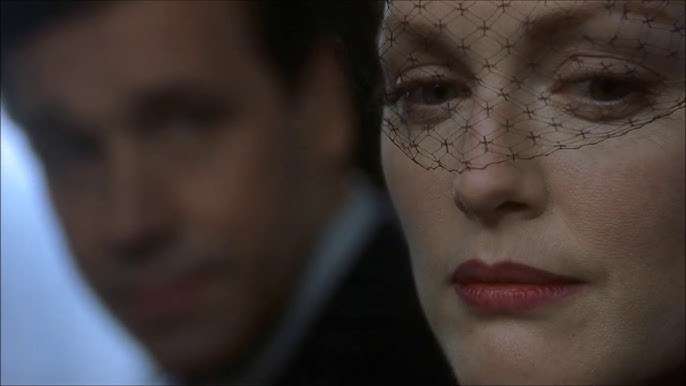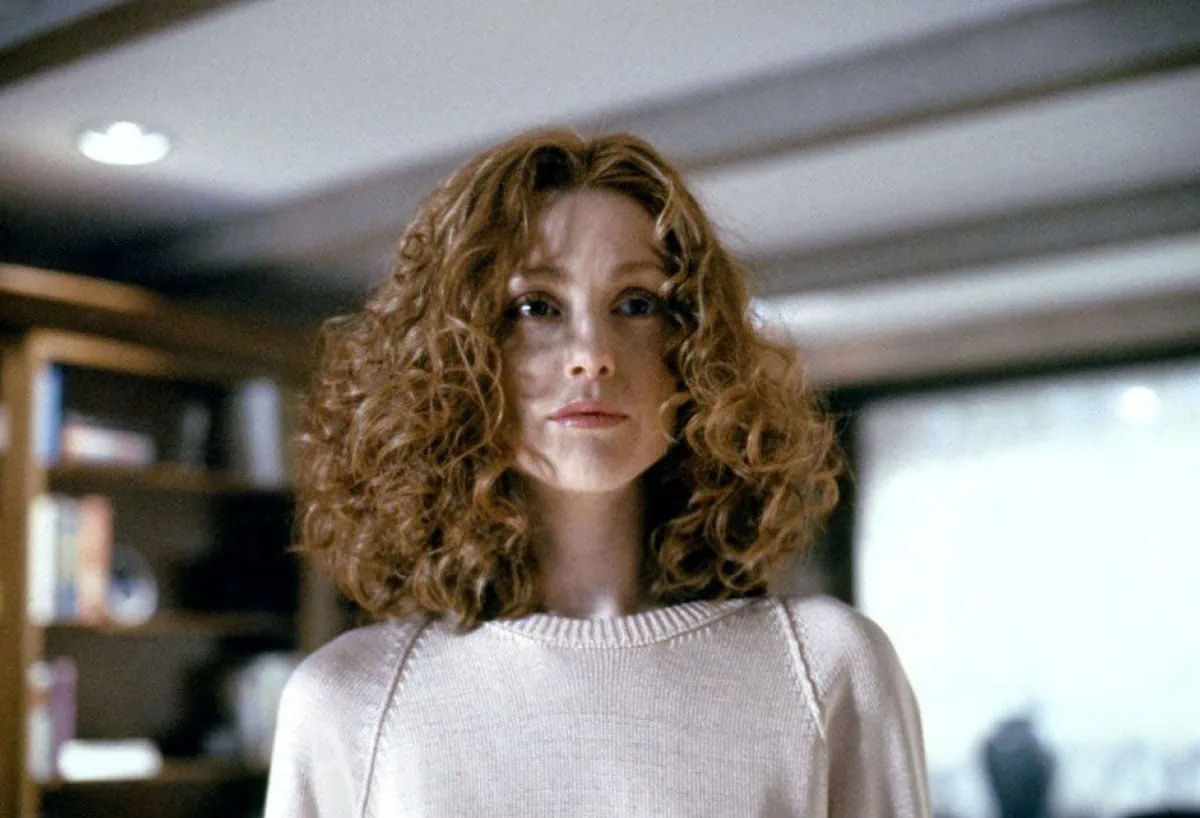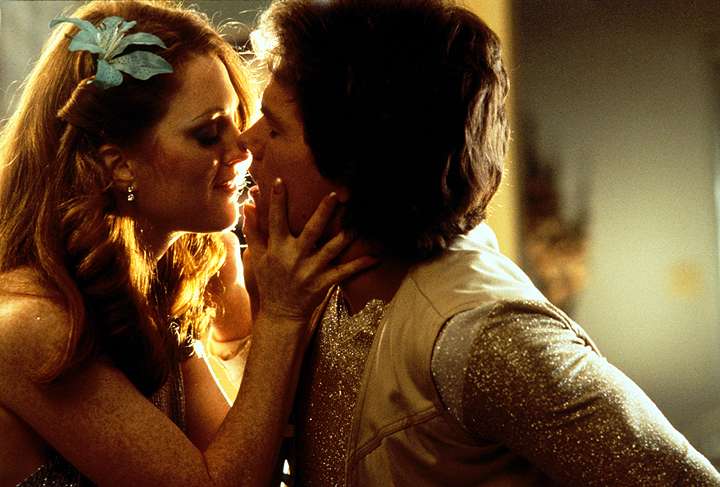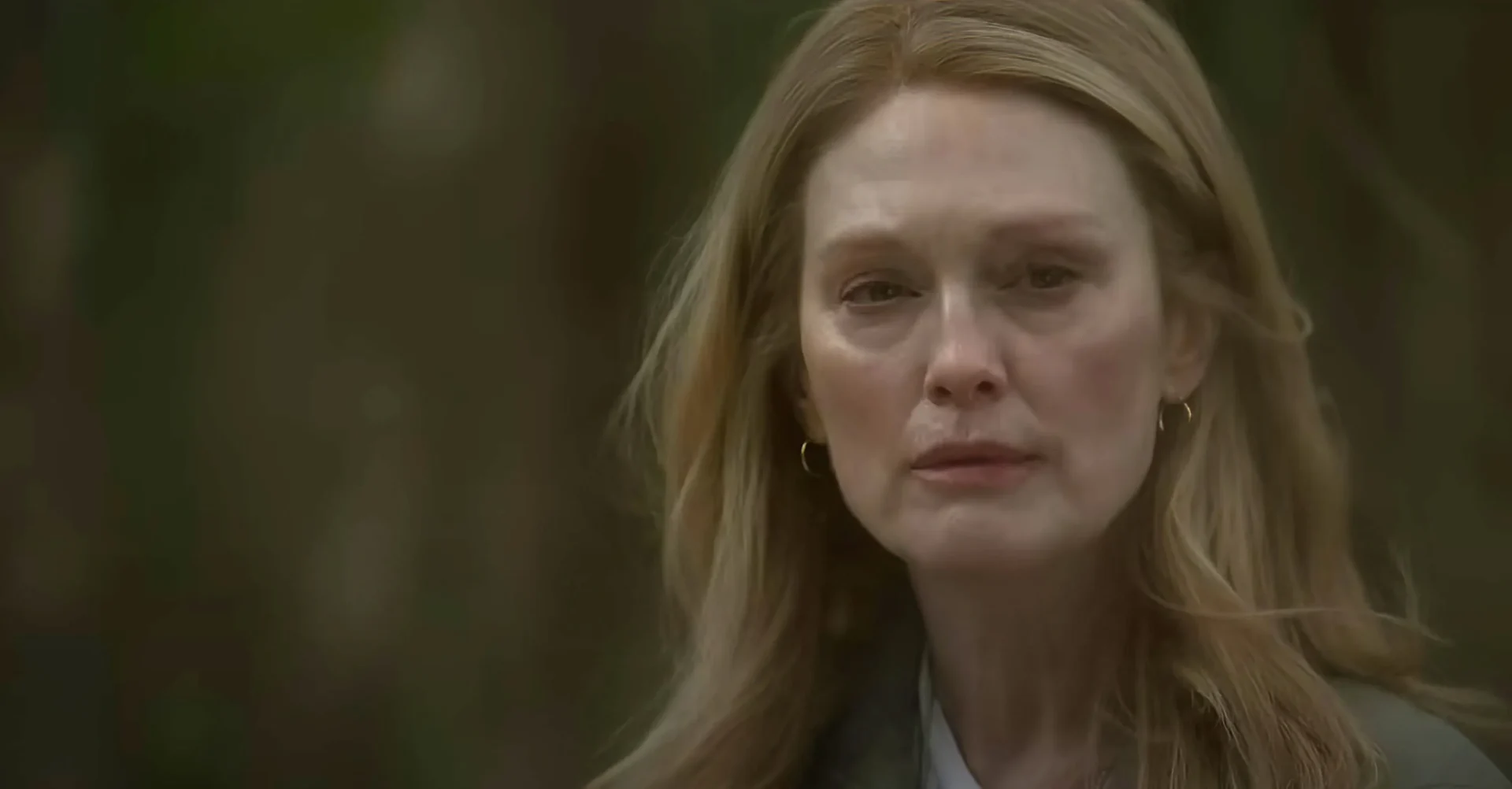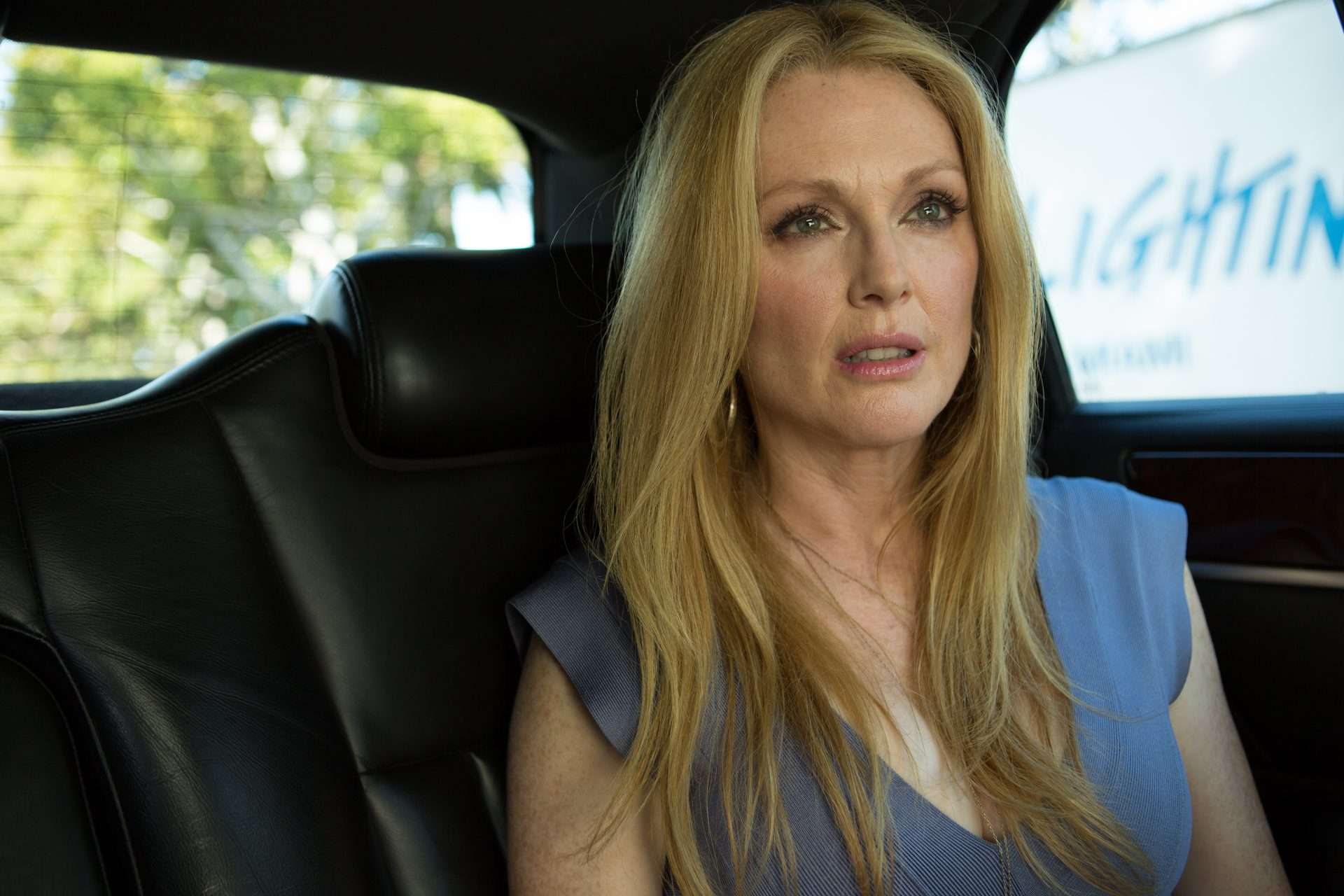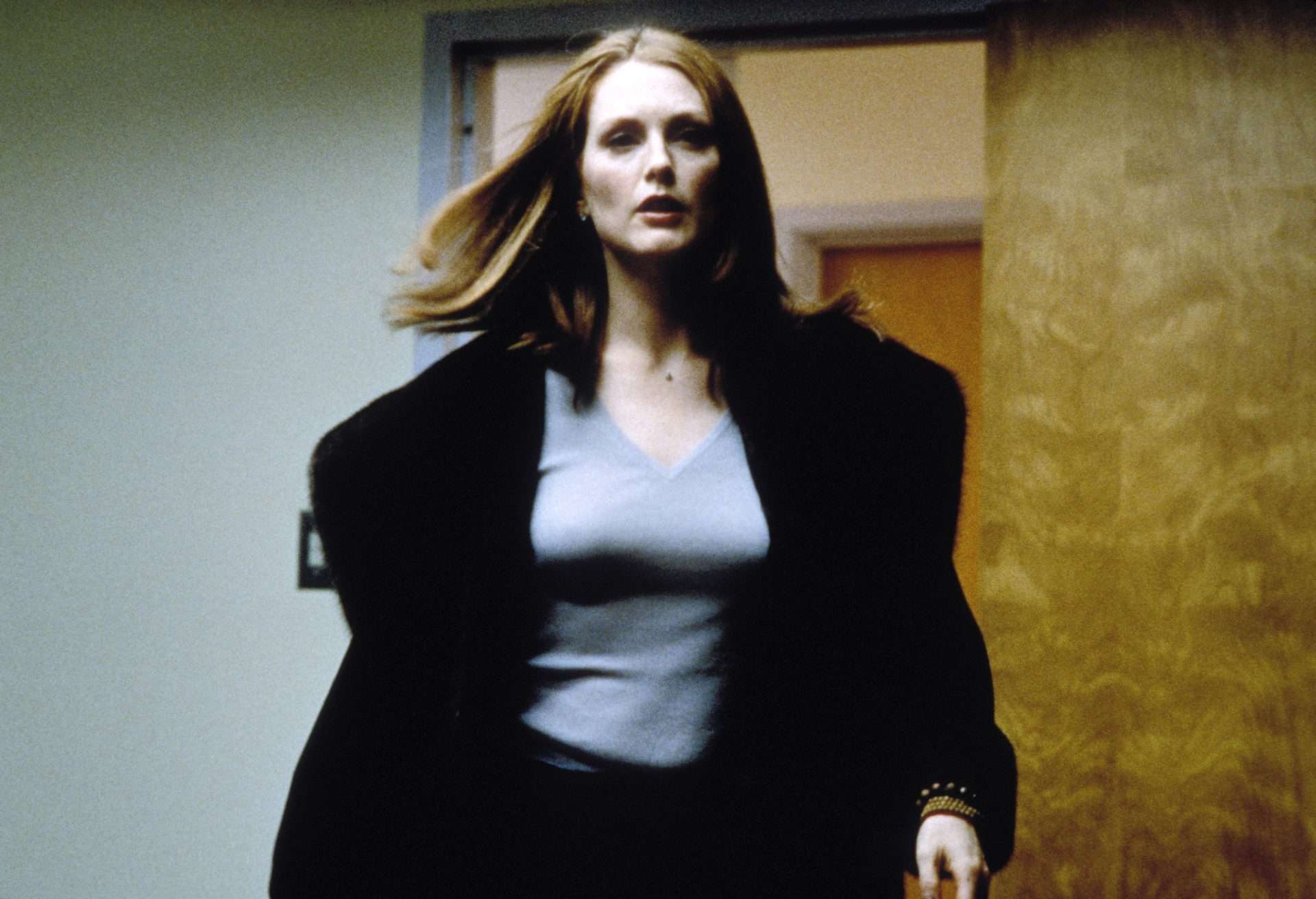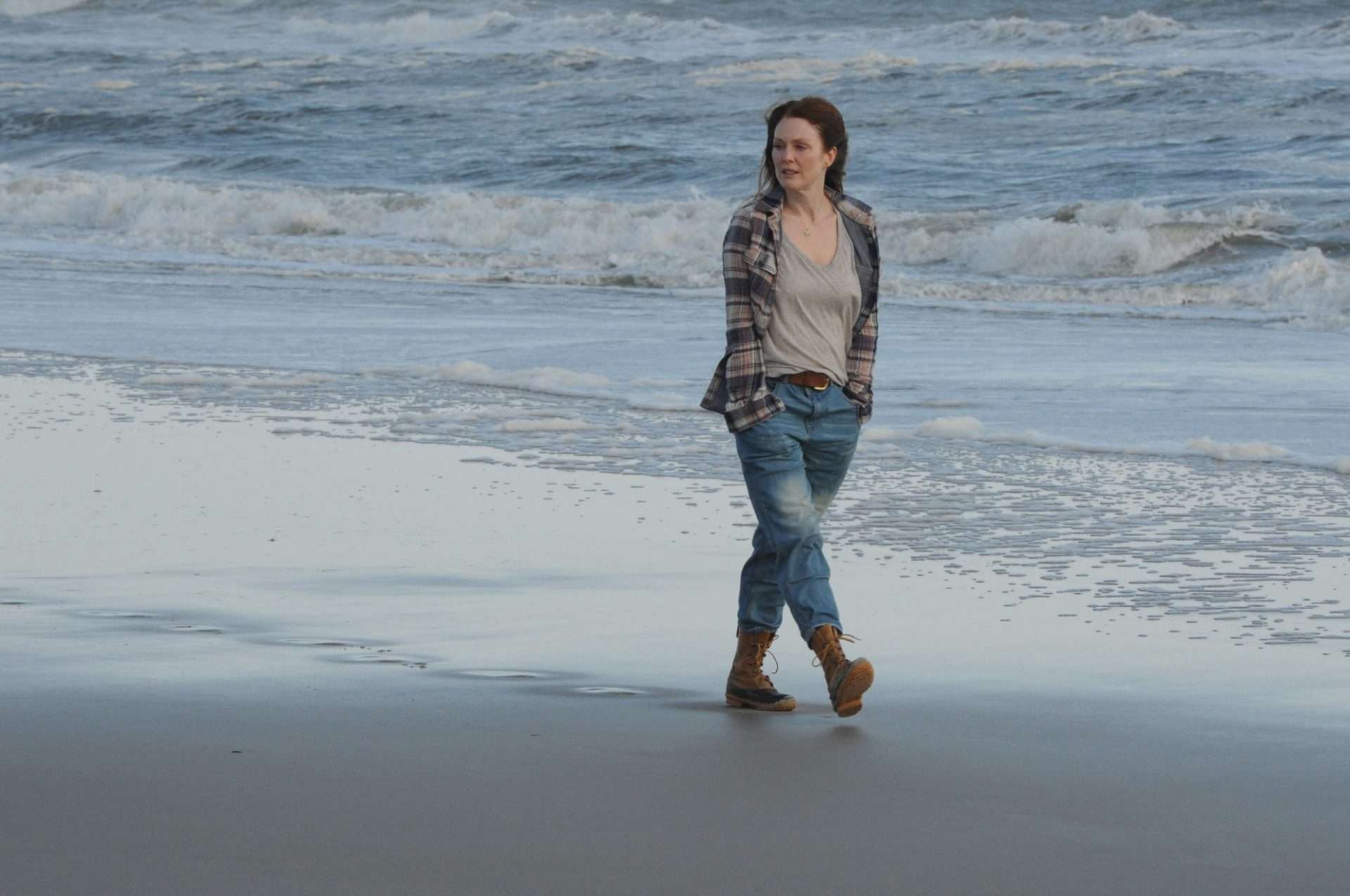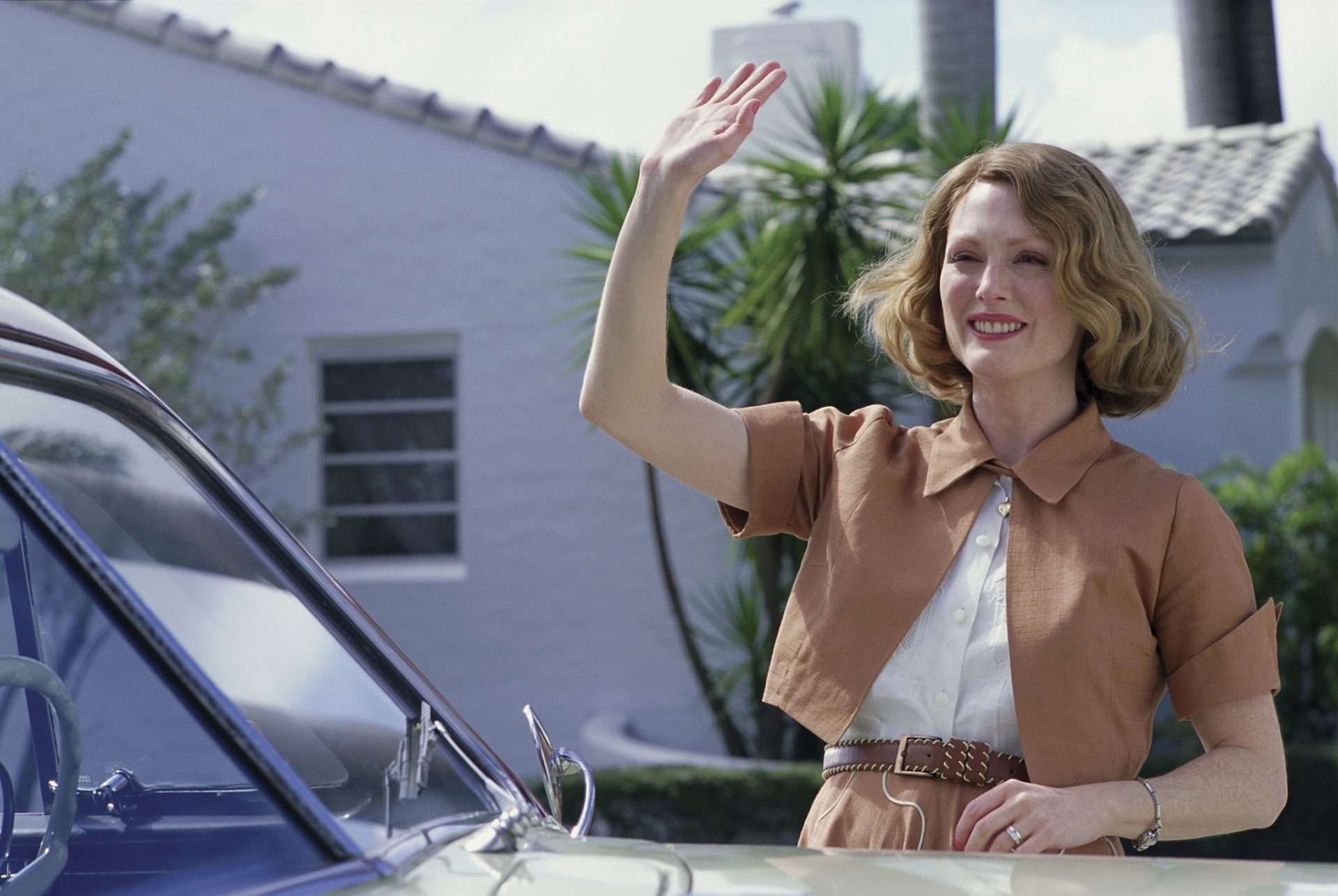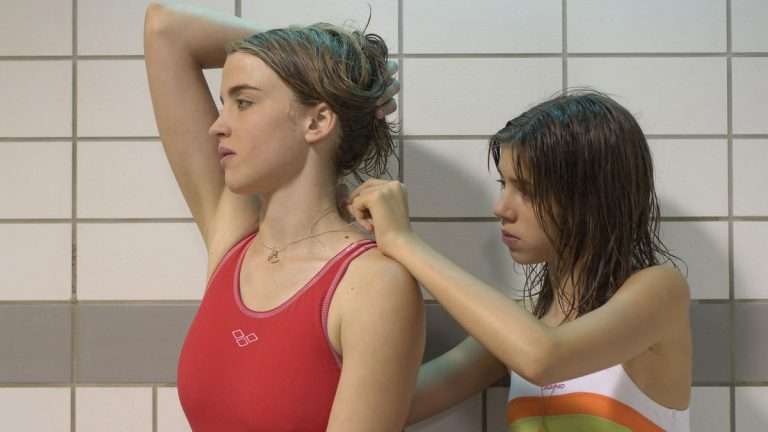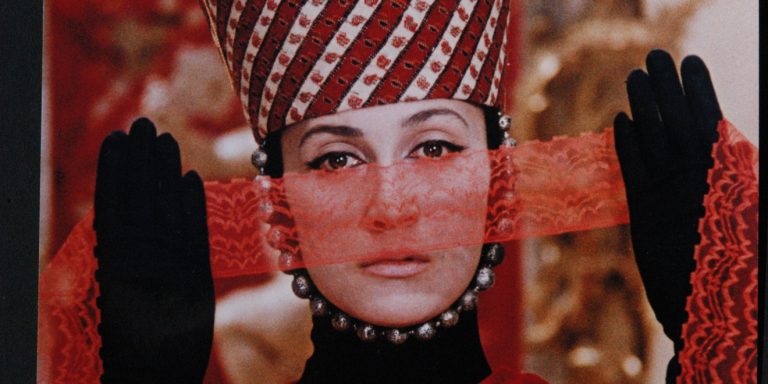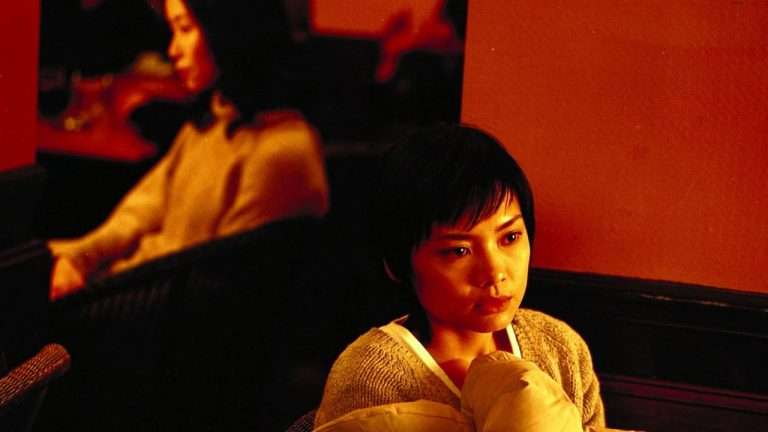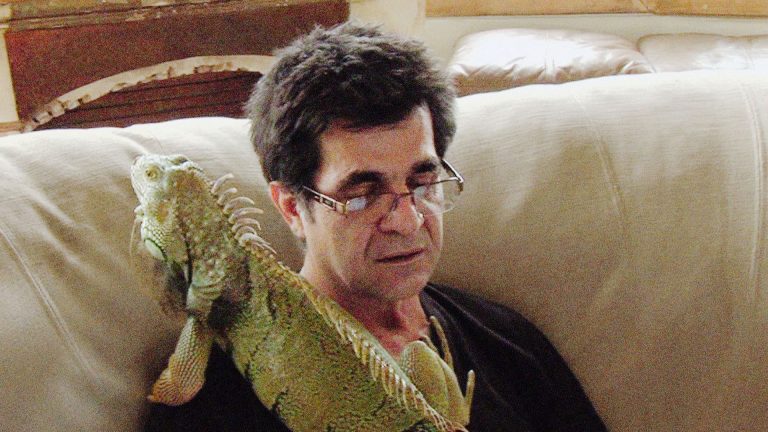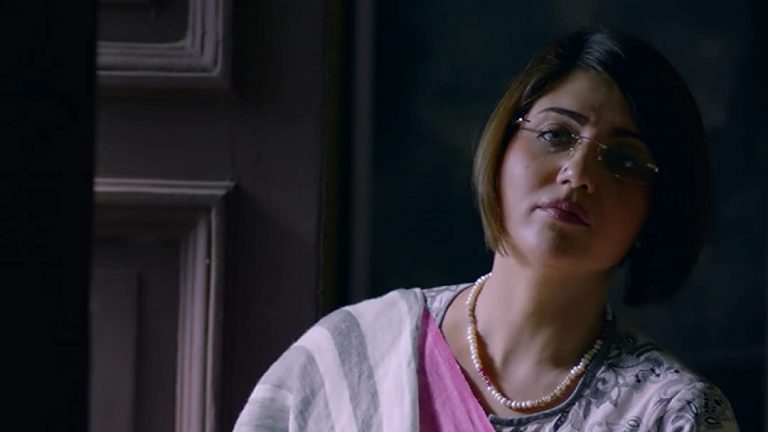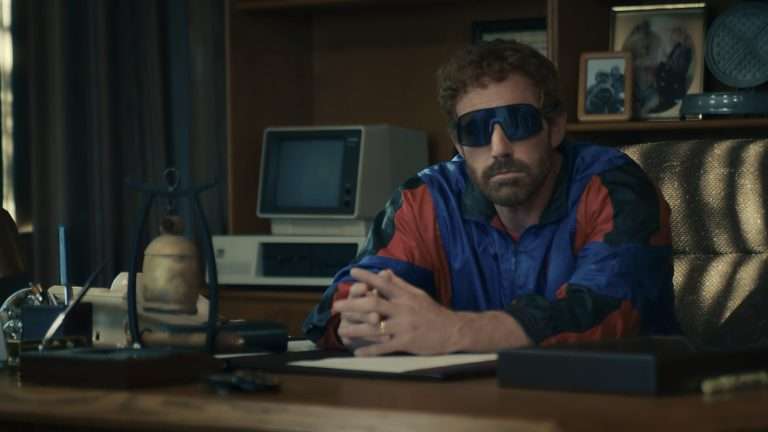Best Julianne Moore Performances: As one of the iconic actresses of contemporary filmmaking, Julianne Moore is an embodiment of the portrayal of human contradictoriness. Born in Fort Bragg in 1960, she grew up between the United States and Europe, ultimately earning a theater degree at Boston University. Following an early stint in off-Broadway stage productions, an extensive television and motion picture experience (including her appearance in the soap opera As the World Turns, for which she earned an Emmy Award in 1988, and in Robert Altman’s Short Cuts, which won an actor’s collective award in Venice), led her to establish herself as one of the most in-demand actresses since the 1990s.
Among the best artists of her generation, she has been indeed nominated five times at the Academy Awards and has earned the “European Triple Crown of Acting,” namely the Silver Bear at the Berlin Film Festival, a Prix d’interprétation féminine at the Cannes Film Festival and two Coppa Volpi for best female performance at the Venice Film Festival.
The actress starred in over 70 feature films, from drama to comedy to the horror genre, building such a comprehensive portfolio of roles that the range of her most successful ones easily exceeds the limited quota of ten. Indeed, rather than a ranking of the raw quality of her performances, altogether quite masterful in the majority of the actress’ filmography, it is challenging to explore some of the most representative works of her career and acting imprint.
10. Vanya on 42nd Street (1994)
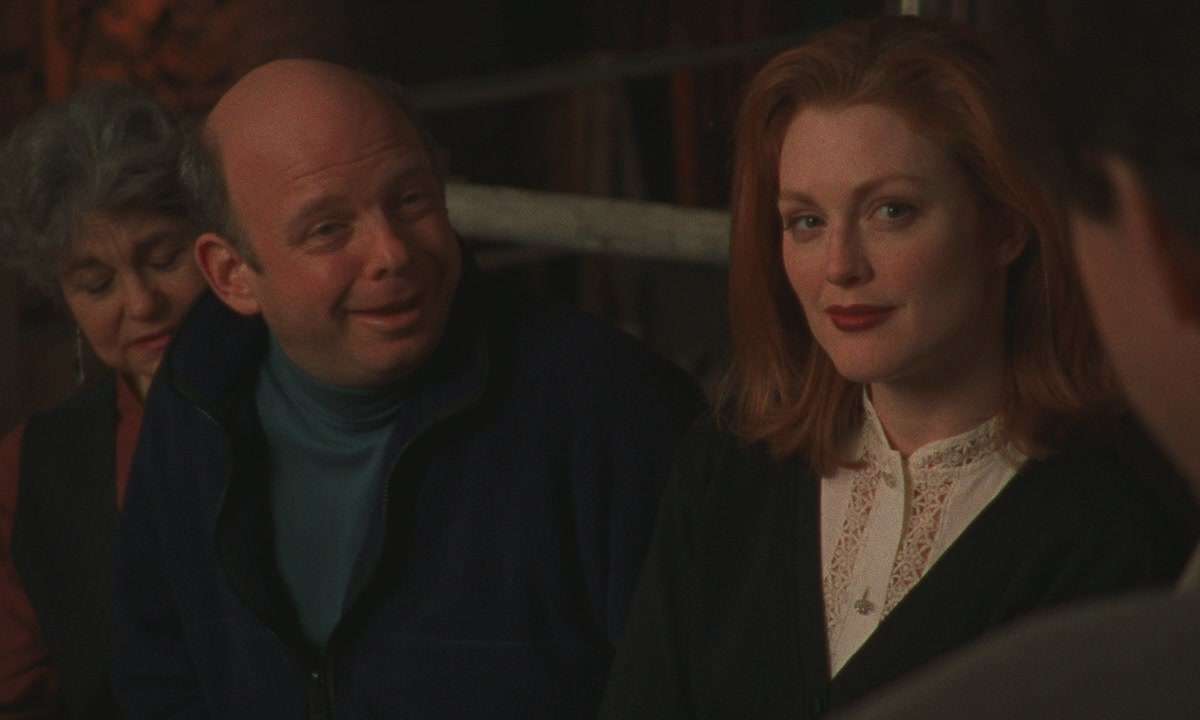
Among the actress’ earliest performances, Vanya on 42nd Street, directed by Louis Malle, was the last in the French director’s filmography. The project transposes a hybrid experiment between cinema and theater, this being the continuous filming of the extensive play rehearsals preceding theatrical staging. The play in subject is Anton Chekhov’s 1899 drama Uncle Vanya, written and adapted for the theater by David Mamet.
Julianne Moore stars as Yelena, the second wife of elder Professor Serebrijakov (George Gaynes), and the romantic interest of Vanya (Wallace Shawn), whom she rejects. The picture interlaces Chekhov’s time tragedy with an implicit reflection on the power of theater (and of performance) in understanding art a little bit better. On Manhattan’s 42nd Street, the masterful cast of actors moves and acts inside the then-dilapidated New Amsterdam Theater, a venue as decaying as Chekhov’s own subjects. The cast shines in the expedient of the theater workshop, and the focus on the performers’ faces, words, and movements further sublimate (and further prove) Moore’s capacity to fully live and understand her characters.
9. The End of the Affair (1999)
The End of the Affair is a 1999 romantic drama directed by Neil Jordan based on Graham Greene’s novel of the same name. The film is set in 1946 London, where writer Maurice Bendrix (Ralph Fiennes) questions the motifs that led his ex-lover, Sarah (Julianne Moore), to end their relationship abruptly. The dynamic of the movie constructs itself around a trio of characters, namely the two former lovers (Maurice and Sarah) and her husband, Henry (Stephen Rea), who is already aware of the past adultery. Maurice, still bewitched by the enigmatic figure of Sarah two years after the termination of the affair, purloins and traces her diary, bringing to light the bittersweet truth hidden behind their love.
The character of Sarah, emblematic of the artist’s muse, embodies an icon of a charitable conception of love. Conception is opposed to the beloved Maurice’s more “petty” and earthy feelings. Overall, Jordan’s movie portrays two different but equally intense yet painful ways of loving the other. For Sarah’s character, Julianne Moore was recognized with her first Academy Awards nomination for Best Actress in a Leading Role, the second of her current five nominations.
8. Safe (1995)
Safe, a psychological horror film directed by Todd Haynes in 1995, marks the beginning of a fruitful collaboration between the director and the actress. Set in 1987 in Los Angeles, it has protagonist Carol White (Julianne Moore), a housewife whose routine life is suddenly disrupted by a form of environmental illness, a mysterious and invisible disease that is hard to cure and diagnose. Suddenly finding herself vulnerable to her suburban surroundings, she is forced into an even more sterile setting, a reflection of the already sterile life she previously led.
Along with the more subtly feminist subtext, Safe reflects on the loneliness of ailing individuals in a society that is superficially empathetic and practically utilitarian. Carol’s vulnerability and complexity are clothed by her performer with such finesse as to sublimate the entire film, which is indeed heavily backed by Moore’s interpretive capacity. Although not one of the actress’s best-known performances, this became Moore’s breakthrough role. It also incorporates some of the topos that will characterize several of her future performances, particularly the character-level interweaving of external and societal conflicts with internal and psychological ones.
7. Boogie Nights (1997)
Boogie Nights, written and directed by Paul Thomas Anderson, is modeled on the eccentric imagery of California’s pornographic industry of the late 1970s. Julianne Moore plays Amber Waves, a leading actress in the troupe led by porn mogul Jack Horner (Burt Reynolds). More precisely, Horner is an adult film director determined to elevate the genre to “real” cinema. At the same time, Amber, his partner, is a divorced woman devastated by the mandatory separation from her son. Furthermore, Amber is the first mentor to the inexperienced Eddie Adams (Mark Wahlberg), the young protagonist taking his first steps in the world of X-rated cinema.
Boogie Nights and the figures who inhabit it navigate a commodification of sexuality, which becomes deprived of both its intimate and romantic dimensions. Yet, Paul Thomas Anderson endows his actors with the humanity of which (those who work in an industry responsive to such “primal” needs) tend to be deprived. It is, in fact, in Moore’s character that the subtle critique of this form of a priori presumption is most reflected. In Boogie Nights, alienation and judgment are indeed the flip side of a lifestyle choice that society both despises and nurtures. Amber, an exemplification of the outcast elimination from the “civilized” (thus forced into the microcosm of her “peers”), was portrayed by Moore so viscerally to bring the actress her first Oscar nomination at the 1998 Academy Awards.
Related to Julianne Moore Performances: The 30 Greatest Cannes Palme d’Or Winners of All Time
6. May December (2023)
In May December, a 2023 production, Julianne Moore once again collaborated with Todd Haynes, for whom she had previously played, among others, the role of Carol White in the 1995 film Safe and of Cathy Withaker in the 2002 movie Far from Heaven. Presented in competition for the Palme d’Or at the 76th Cannes Film Festival, Haynes revisits a notorious American true story featuring Mary Kay Letourneau, an ex-teacher found guilty of solicitation and raping. Julianne Moore plays her film counterpart, Gracie Atherton-Yoo. At present, Gracie is married to Joe (Charles Melton), who was, at the start of their affair, a 13-year-old schoolmate of her son.
May December is structurally shaped as an after-the-fact psychological analysis of these two characters, Gracie and Joe. After two decades since the events unfolded, they are still unable to confront the inherently unhealthy nature of their relationship. If Joe found himself a husband and father before even attaining any real maturity, thus being easily recognizable as the victim, Gracie’s character is of a grayer moral hue. The guilty party, convinced of being the injured one, Gracie poses as a martyr unjustifiably judged by an aromantic society. Despite the criticality of what Gracie represents and of her actions, Julianne Moore manages to give her a humanity that allows, though not excuses, to understand part of the psychology of such a complex character.
5. Maps to the Stars (2014)
Maps to the Stars, a 2014 feature directed by David Cronenberg, is a critique and hyperbole of the invisible Los Angeles rot detectable only when cameras are turned off. In the City of Stars, Havana Segrand (Julianne Moore) is the pinnacle and parody of Hollywood culture. A fading egomaniacal and egotistical actress, Havana remains between the endless obsession of being seen and seeing herself above her supposed challengers. First among them is her mother, Clarice (Sarah Gadon), also an actress. Clarice, who died prematurely in a fire, stands among the tragic and eternally young Hollywood icons, a symbol of a particularly toxic vision of cinematic stardom.
If asserting dominance over someone who is both a symbol of her ambition and of her discomfort is nearly impossible, Havana’s display of superiority becomes most immediate in the small acts of humiliation inflicted on those hierarchically beneath her (i.e., the young personal assistant Agatha, played by Mia Wasikowska). Havana, alternating between being miserable and being sleazy, satirizes the caricatured emotionality presumed in a character belonging to show business. Once again, Julianne Moore proves herself capable of incorporating fascinating juxtapositions into a challenging character, as in the case of May December. Maps to the Stars was presented at the Cannes Film Festival, in its 67th edition, in which Moore earned the Prix d’interprétation féminine for her masterful performance.
4. Magnolia (1999)
The second collaboration of Moore with director Paul Thomas Anderson, Magnolia, is a mosaic of the stories of nine characters. As a red thread, their lives are intertwined in a series of casualties, seemingly more complex than mere coincidence. Magnolia was awarded the Golden Bear at the Berlin Film Festival in the year of its release. It offers a complex portrait of humanity in its dirtiest yet, almost paradoxically, realizes the most sincere and intimate truths.
Linda (Julianne Moore) is the trophy wife of the sick and dying former television producer Earl Partridge (Jason Robards). The woman is burdened with the guilt of knowing how she married Earl for financial return alone, despite being now genuinely in love with her husband. In a desperate and erratic state, Linda finds herself alone in facing the end of the life of the man she realized too late to love and with whom it is now too late to redeem herself. Love, loss, responsibility, and redemption are spirits and common strands driving the actions of Magnolia’s actors, including Linda herself. In an extraordinary cast of performers, among them Tom Cruise, Philip Seymour Hoffman, and John C. Reilly, the urgency of Linda’s character marks some of the best sequences in Paul Thomas Anderson’s magnum opus.
3. Far From Heaven (2002)
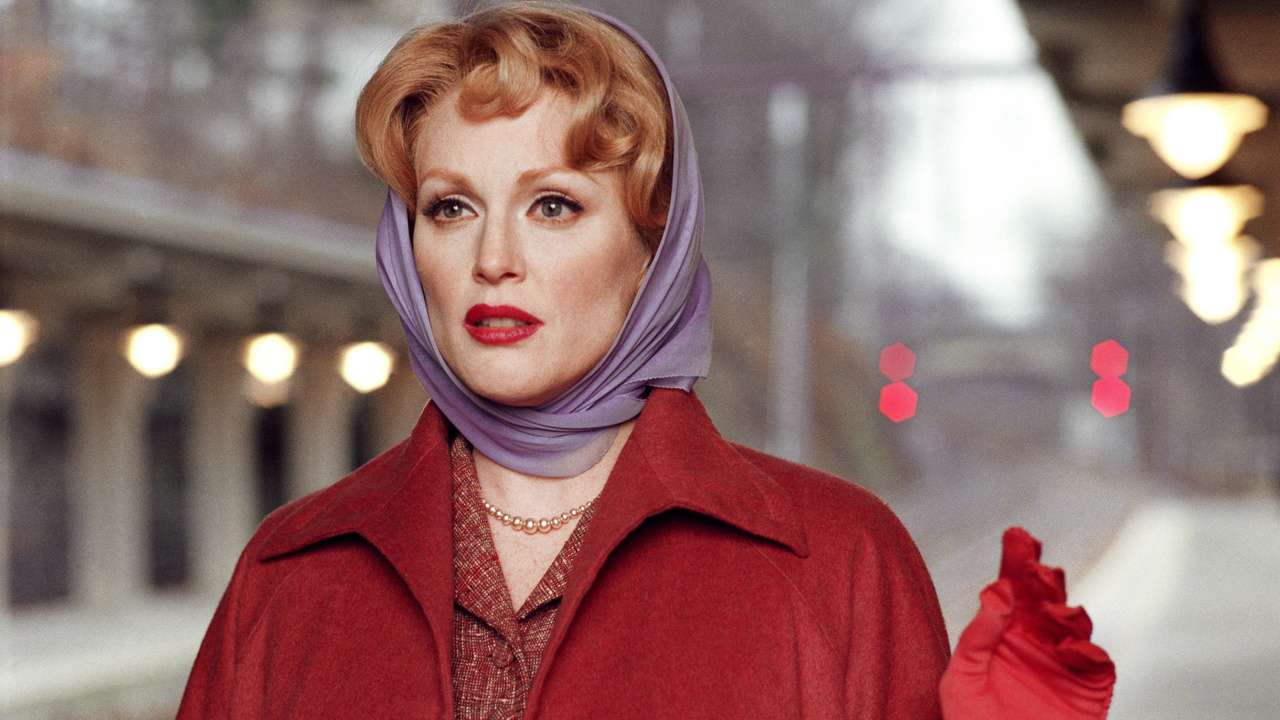
Far from Heaven is Julianne Moore’s second collaboration with Todd Haynes. In this movie, she takes on the role of Cathy Whitaker, an exemplary 1950s Connecticut mother and wife. A neighborhood idol along with her husband Frank (Dennis Quaid), Cathy is a kind woman who doesn’t conform to the American classism of the time. Suppose her natural friendliness toward black gardener Ray (Dennis Haysbert) is initially received as a gesture of bourgeois eccentricity. In that case, developing a deep friendship with him is then branded as a display of amorality.
Cathy and Ray’s entanglement is woven with the discovery of Frank’s repressed homosexuality, an orientation commonly understood as deviance even by those who were “afflicted” with it. Cathy herself approaches her husband as a diseased. But coherently with her persona, she maintains a sincere respect toward her husband’s sexuality. The woman’s empathy and open-mindedness are virtues impeccably transposed by Moore in their being adversarial as ahead of their time. In fact, in Far from Heaven, those qualities become sources of marginalization on par with membership in any other discriminated minority.
Far from Heaven’s, Cathy is usually recognized among the actress’s most notable roles. The part earned Julianne Moore a nomination for Best Actress in a Leading Role at the 2003 Academy Awards, although the award went to Nicole Kidman for The Hours.
2. Still Alice (2014)
As difficult as it may be to determine which performance-level excellencies for an actress with such an extensive filmography as Julianne Moore, Still Alice is potentially the most challenging and possibly unsettling role she has played. Still Alice is a film adaptation, directed by Richard Glatzer and Wash Westmoreland, of the novel of the same name by neuroscientist Lisa Genova, who specializes in the study of the most complex pathologies of the brain. Julianne Moore plays the protagonist, Alice Howland, a 50-year-old linguist stricken with a rare and early-onset Alzheimer’s disease.
Alice experiences the ruthless fear of slowly losing herself, everything that makes her so, everything she has built. Fear consolidated in the reality of facts, from forgetting, at first, a few words to forgetting her own home to forgetting her own children. And the prevailing sickness facilitating the loss of what has been slowly built is a test for Alice and those around her. What the actress perfectly conveys, however, more than the loss, is the delicacy of what Alice manages to hold on to – the thing that makes her a valuable person at her core. For the role and for the delicate rendition of human vulnerability Still Alice depicts, Julianne Moore has been awarded as Best Actress in a Leading Role at the 2015 Oscars.
1. The Hours (2002)
The Hours, also from 2002, is a drama directed by Stephen Daldry based on the eponymous novel by American writer and screenwriter Michael Cunningham. It tells the story of three women who, across years and space, conjoin in the words of the same novel, namely, Virginia Woolf’s Mrs. Dalloway. The first woman is its author, the second is one of its future readers, and the third is a modern retelling of its protagonist. Respectively played by Nicole Kidman, Julianne Moore, and Meryl Streep, the performance of the three actresses has earned each of them numerous accolades, including an Oscar nomination for Julianne Moore and an Oscar win for Nicole Kidman.
In 1951 Los Angeles, Moore’s character, Laura Brown, lives a life co-habited by her loving husband Dan (John C. Reilly), her sweet son Richie (Jack Rovello), a beautiful middle-class home, and cordial visits from neighbor and friend Kitty (Toni Collette). What appears to be an idyllic picture is complemented by the prospect of the enlargement of the family by the approaching of Dan’s birthday party. An incoming child she does not want, a devoted husband she no longer reciprocates or has never reciprocated, Laura masks a deep sadness behind the awareness of the apparent happiness for which she “should” be more grateful.
Laura’s role is actually an expression of what are the most despicable and contradictory traits of depression: guilt, alienation, repression, and, in a sense, the self-centeredness that follows. The actress succeeds in the delicate task of portraying an affliction complex enough to be impossible to transfer to speech or script. As in reality, the core of what depression is reveals itself only in what is not said out loud, in the subtlety of gestures, glances, and voice inflections. However, containing Laura’s presence on screen, Julianne’s acting remains not simply one of the best female performances of the 2000s but also one of the best portrayals of mental disorders in cinematic history.

